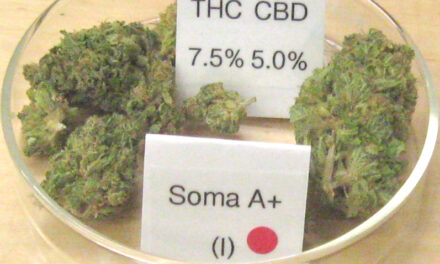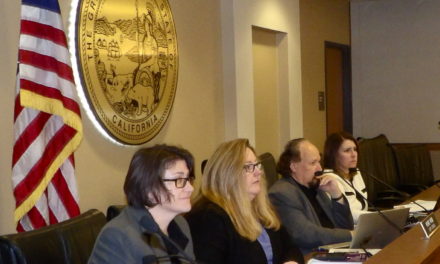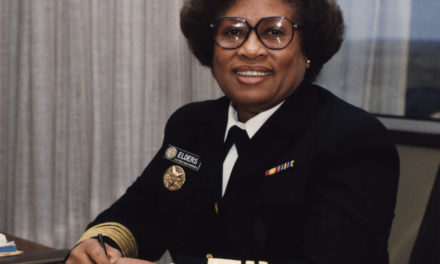By Dale Gieringer in O’Shaughnessy’s Spring 2005
Communities are passing legislation to deal with the growing number of medical cannabis dispensaries in California.
More than 120 dispensaries, patients’ co-ops and delivery services are now listed on the California NORML website (www.canorml.org), up from 90 six months ago. Among them are new groups in previously underserved Southern California cities, including San Diego, and Long Beach. West Hollywood has become a major center of action in the Los Angeles area with seven dispensaries, all of which opened in the past year.
In the Bay Area, the city of Oakland closed four out of eight downtown dispensaries in June 2004, but afterwards six new ones cropped up in an unincorporated area to the south. Neighbors expressed dismay and Alameda County supervisors responded with a moratorium on new clubs. The supervisors are considering further legislation to regulate and limit the number of clubs in the county, a la Oakland, Hayward and Berkeley. Local medical cannabis activists are hopeful that they can ward off draconian restrictions proposed by the Alameda County sheriff, which include prohibiting on-site consumption, banning sales of food (including cannabis edibles), drink, and “paraphernalia,” and requiring drug testing for employees.
Santa Rosa is also considering regulating cannabis clubs. City officials are strongly supportive of medical cannabis, but concerned by a recent spurt of dispensary openings.
“They see lots of young men going into these places, and don’t know what to do,” explains a local patient advocate.
Several cities and counties around the state have moved to pass ordinances in response to applications from would-be dispensary operators. Some towns, including Davis, Willits, Fremont, Dixon and Rancho Cordova have passed moratoriums prohibiting the opening of dispensaries pending further study by city officials. Others, including Citrus Heights, Elk Grove, Roseville, Plymouth and Auburn have passed ordinances explicitly regulating them.
San Leandro enacted a preventive moratorium aimed at warding off the flood of clubs from nearby Hayward and Alameda County. The city council voted 4-0 (with three members absent) to extend the ban until November 2006.
Sacramento County has put a freeze on new clubs while it ponders an ordinance to regulate them. At least one dispensary is already operating in the county.
The Calaveras County Board of Supervisors voted 3-2 to permit dispensaries to operate in professional office zones. The move came in response to a request by patient Kim Cue to set up a facility in San Andreas. However, Sheriff Dennis Downum, warned that the federal government would likely shut it down just like the Roseville club. Downum reportedly has sicced the feds on local Prop. 215 growers.
In Riverside County, Temecula moved to ban dispensaries after receiving an application inquiry from Compassionate Caregivers, which operates dispensaries at a half dozen locations around the state.
Many communities are proceeding cautiously pending the Supreme Court decision in the Raich case.
Many communities are proceeding cautiously pending the Supreme Court decision in the Raich case. Placerville approved a permit for the city’s first cannabis dispensary, but only on condition that the federal government permit use of the drug. The San Luis Obispo City Council voted to impose a moratorium until the Raich ruling is announced.
Other towns in the area, including Arroyo Grande, Grover Beach and Santa Maria have been considering similar action.
In early February, 2005, Huntington Beach imposed a moratorium on medical dispensaries even though there had been no applications. The city attorney said she was awaiting “guidance from the courts.”
If the Supreme Court rules against Raich, more communities are apt to close the door to dispensaries. Some observers foresee a federal crackdown in that event.
Regardless of the court’s decision, however, the fact remains that over-the-counter sale of marijuana to Prop 215 patients remains illegal under state law. Under SB420, only legally designated “primary caregivers” may receive money for their services, and then not for profit. Those dispensaries that do operate in California do so purely on tolerance of local authorities.
Apparent Confusion
Many cities and counties remain confused about the law. Some assume incorrectly that they are obliged to accomodate dispensaries, while others feel free to ban them entirely. Others have failed to recognize the distinction between dispensaries, which sell medical cannabis on a retail basis, and cooperatives or collective gardens, in which patients share the crop amongst themselves. While the former are not authorized by state law, the latter are explicitly encouraged under SB 420.
This has become an issue in the city of Fresno, which passed an ordinance prohibiting medical marijuana facilities that serve more than two patients. Fresno resident James Mitchell, who grows for two dozen fellow patients, has objected that the ordinance should not apply to his activities, since he is operating a collective garden. The council is working on another ordinance to regulate where medical marijuana can be grown in the city.
The city of Clovis also passed a two-patient limit on cannabis providers.
In mid-December Fresno County banned dispensaries in unincorporated areas and passed an ordinance limiting sales to two patients.
Ukiah residents have complained about the skunky odor emanating from the city’s many marijuana gardens
In cannabis-friendly Mendocino County, some residents of Ukiah have complained about the skunky odor emanating from the city’s many marijuana gardens and police have noted a spate of marijuana-related thefts and robberies. Addressing the issue as a nuisance, the city is considering an ordinance to limit the number of outdoor plants patients can grow to three. Willits is considering a similar ordinance.
SB 420 Implementation
In the absence of state IDs, many law enforcement officials are citing legal patients even when they present valid physician’s recommendations. In particular, the California Highway Patrol has an official policy of citing and and confiscating marijuana from everyone with marijuana, no matter how well his or her patient status is documented. Patients must then go to court to recover their medicine and have the citation dismissed.
One of the CHP’s victims was Greg Ainsworth, a non-driving paraplegic who was cited while sitting in his wheelchair alongside the road outside a stalled vehicle on I-5 near Los Banos. A patrolman smelled marijuana and cited him for less than one ounce despite his Oakland ID card. Ainsworth had to make a140-mile round trip to court to reclaim his medicine.
The CHP explained that they ignore Prop 215 since there is no SB 420 card program. This policy has been confirmed in official CHP documents posted by Prop 215 defendant Jason Fishbain at www.stophippieprofiling.org
California NORML attorneys charge that the CHP policy is unconstitutional since it subjects patients to citation and seizure without probable cause. A lawsuit to challenge the CHP’s policy was filed by Cal NORML and Americans for Safe Access in mid-February.
The CHP has also been citing patients under Vehicle Code 23222 for misdemeanor possession of less than one ounce of marijuana in a vehicle while driving. Due to an apparent oversight in drafting SB420 doesn’t include VC 23222 in the list of offenses for which patients are protected from arrest, even though felony transportation of more than one ounce (Health and Safety Code 11360) is included. Ironically, therefore, SB 420 appears to protect patients who drive with more, but not less than one ounce in their vehicle. Attorneys believe that this inconsistency is vulnerable to court challenge. California NORML is looking for test cases to establish that patients should be protected from citation for VC2322.





